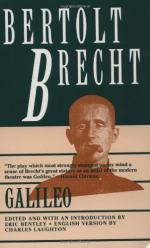|
This section contains 466 words (approx. 2 pages at 300 words per page) |

|
Galileo and Aristotle- Motion and the Law of Falling Bodies
Summary: Descriptions of motion and the law of falling bodies described by Galileo and Aristotle.
Galileo, At the University of Padua, learned the physics of Aristotle and questioned Aristotle's approach to physics. So over the course of his life Galileo would try to refute the concepts of physics that had been in place for over 2000 years.
Aristotle believed that heavier objects fall faster through a medium than a lighter object. Galileo refuted this idea and said that all objects regardless of their Density fall at the same rate in a vacuum. To determine this Galileo dropped several different objects from certain heights and rolled balls down an incline and determined their intervals were equal. He wrote On Motion, in it he uses the Archimedean approaches and states that the speed of falling bodies is proportional to their density not their weight.
Galileo experimented with uniformly accelerated motion, and his Law of falling bodies, which came from the same set of experiments. Galileo was...
|
This section contains 466 words (approx. 2 pages at 300 words per page) |

|


